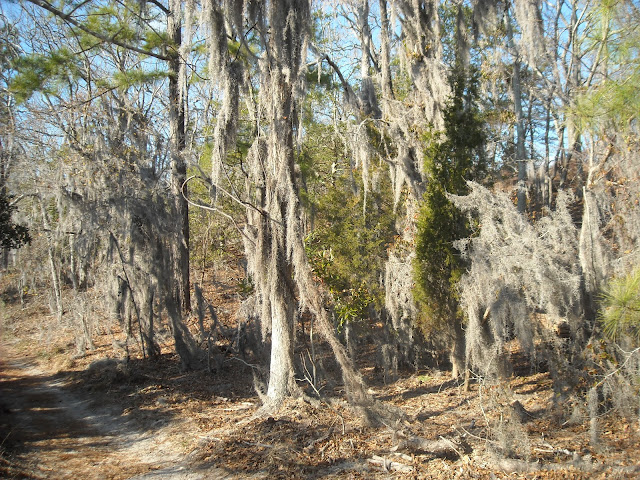Virginia Pineapple? The fascinating family of Bromeliaceae
Who hasn't tried pineapple before? It always seems to end up in fruit salads at family reunions, there's always someone in the crowed ordering "Hawain pizza", and the grocery stores always seem stocked full with showy pineapples displaying their rough-textured, compartmentalized skin with bizarre green leaves on top (Photo A). To most people living in temperate regions such as most of the lower 48 United States, pineapples are nothing short of exotic and unusual - and not like anything we have growing in the wild on our landscape...or do we?
Pineapples are in the family Bromeliacea, which includes a large group of mostly tropical plants that are primarily epiphytes - plants that grow on top of other plants (see photo B).
 |
Photo A: A pineapple grows wild along a woodland edge in a tropical park in
Ecuador, South America.
|
Pineapples are in the family Bromeliacea, which includes a large group of mostly tropical plants that are primarily epiphytes - plants that grow on top of other plants (see photo B).
 | ||
| Photo B: Bromiliads, shown in the center of this photo, are a common group of tropical epiphytes throughout rain forests and cloud forests in central and south America.
As one travels north, however, the diversity of bromliads drops. Where I am in the Hampton Roads region of Virginia, there is just one type of bromiliad.
The bromliad that is native to southeast Virginia looks nothing like the exotic tree-hanging epiphytes of the tropics or the mouth-watering fruitiness of a pineapple. It is, however, a plant in the Bromiliad family. It is also a well-known plant of the deep south, meeting its northern limit in Virginia Beach, VA at the mouth of the Chesapeake Bay. The following series of photos are of Spanish Moss (Tillandsia usneoides). While it may not resemble anything close to a pineapple, biologically it has enough similar traits for scientists to classify it in the same family as our favorite Hawain-Pizza topping.
Spanish Moss drapes trees along the Kingfisher Trail at First Landing State Park. Virginia Beach, VA. January 2012
|







Comments
Post a Comment